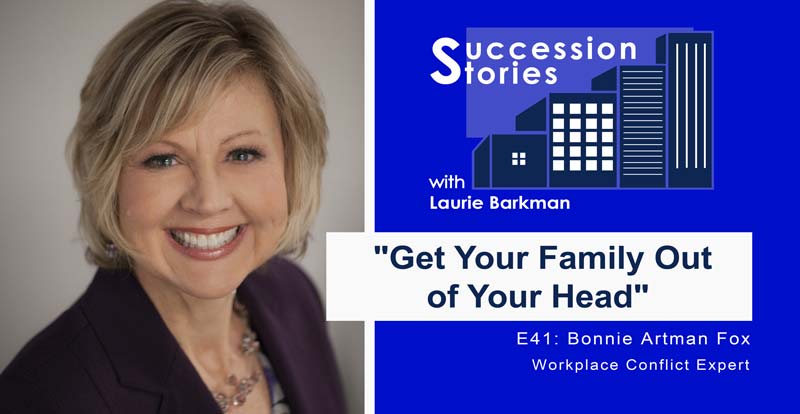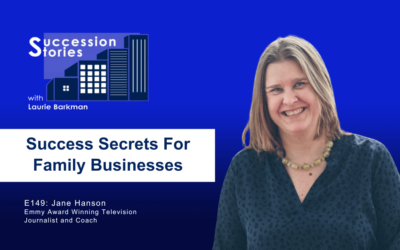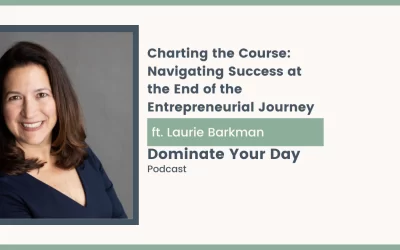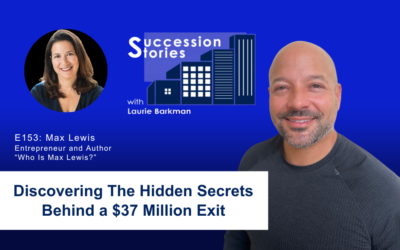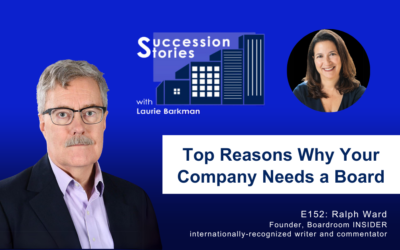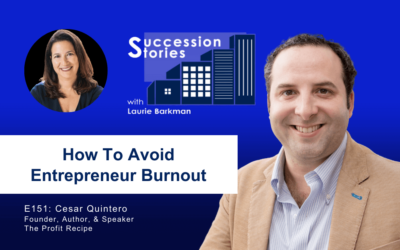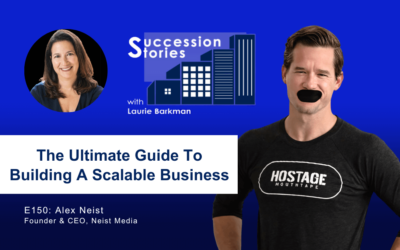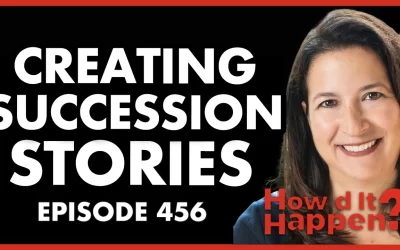Did you know that unresolved conflict costs organizations about $359 billion in paid hours every year? Laurie Barkman talks withBonnie Artman Fox, author of How Did My Family Get In My Office? Bonnie is a workplace conflict resolution expert from her experience as a psychiatric nurse and family therapist. Listen in as they talk about how we handle conflict results from how our family handled conflict at home. But our past experiences do not have to define our future. Bonnie shares ways to self-reflect, build trust, and move forward. Listen in for insights about resolving workplace conflict by getting your family out of the office.
Listen in to learn more about:
- The four R’s of resolution
- Understanding how our upbringing informs our conflict resolution style
- Self-reflection and its power
- Resolving conflict by looking within
Show Links
- Bonnie Artman Fox’s Website: https://bonnieartmanfox.com/
- Book: How Did My Family Get In My Office? on Amazon
- Connect with the host, Laurie Barkman on SmallDotBig.com and sign-up for an insights newsletter to build value in your company.
Episode Transcript:
Welcome to Succession Stories insights for next-generation entrepreneurs. I’m Laurie Barkman. I’ve spent my career bringing an entrepreneurial approach to mature companies struggling with change. As an outside executive of a third-generation 120-year-old company, I was part of a long-term succession plan.
Now I work with entrepreneurs privately held companies and family businesses to develop innovations that create enterprise value in transition plans to achieve their long-term goals.
On this podcast, listen and while I talk with entrepreneurs who are driving innovation and culture change, I speak with owners who successfully transition their company and others who experienced disappointment along the way.
Guests also include experts in multi-generational businesses and entrepreneurship.
If you are a next-generation entrepreneur, looking for inspiration to grow and thrive, or an owner who can’t figure out the best way to transition their closely held company, this podcast is for you.
Subscribe to our newsletter for more resources to build value in your business, visit smalldotbig.com and sign up today.
Laurie Barkman:
Did you know that unresolved conflict costs organizations about $359 billion in paid hours every year? Bonnie Artman Fox is the author of How Did My Family Get In My Office? She’s a workplace conflict resolution expert from her experience as a psychiatric nurse and family therapist. Bonnie understood that the way we handle conflict at work is often a learned behavior that resulted from how our family handled conflict at home. But our past experiences do not have to define our future. Bonnie talks about having the pertinacity to self-reflect, build trust, and move forward. Listen in for insights about resolving workplace conflict by getting your family out of the office.
Laurie Barkman:
Bonnie Artman Fox, thank you so much for joining me today on Succession Stories. It is an interesting topic. It’s a little different than what I normally cover on the show and you and I talked about that like, “Okay, we’re going to talk about conflict in the workplace. We’re going to talk about dysfunctional teams. We’re going to talk about things that maybe we don’t normally talk about in the show.”
I think that’s really why I’ve decided to put a spotlight on it. Because at the end of the day, if the teams are not functioning the way that they should be, it’s going to hold the company back from achieving its goals and from achieving its vision. On the profitability side, on the growth side, and on the happiness scale there’ll be a zero, and we don’t want that. So Bonnie, welcome to the show. I’m so glad to be with you. Why don’t we start by you introducing yourself?
Bonnie Artman Fox:
Well, first of all, thank you, Laurie, for this invitation. I love love love talking about conflict. I know that sounds crazy but I truly believe that when teams have the courage to talk about what’s really going on in the workplace, that’s when all the positive things that you just described can happen in terms of productivity, and ultimately, bottom line results.
So a little bit about me. I started out as a psychiatric nurse. I couldn’t take the blood guts of medical nursing, so I went into psychiatric nursing and then worked in the addictions field for a while and found that people got better quicker when the family was involved. So I went on to become a licensed Marriage and Family Therapist. I had my own practice for several years and in that setting found that a lot of folks were coming in dealing with anxiety, depression, sleepless nights because of dysfunctional workplaces. So over eight years ago, I moved from Illinois to Pennsylvania and shifted my focus from therapy to leadership coaching, to help leaders be more effective in how they lead and especially in how they deal with conflict.
Laurie Barkman:
You’ve written a book that we’re gonna spend some time on today talking about. Maybe you can share a bit about that book and why you wrote it.
Bonnie Artman Fox:
Yes, thank you. The book is called How Did My Family Get In My Office? and it’s a compilation of real life stories of leaders who were willing to share with me in very transparent and vulnerable ways, how conflict was handled in their upbringing, and how they made the conscious choice to either change their family conflict pattern for the better, and how they handle conflict, or leverage their family strengths.
The book is written from the perspective of how their family upbringing — in terms of how conflict was handled — impact their leadership, and how they handle conflict as a leader. Every story is in the leader’s words, and then I offer a perspective — what I call the family factor — of the connection between how conflict was handled in our upbringing impacts us today. Each of the leaders provide their own productive conflict management strategies of what was helpful for them to change their conflict pattern. Why I wrote it, again, goes back to what I saw as a therapist when folks were coming in dealing with conflict in the workplace. As we unpacked what was going on, more often than not, there was a connection between their role of how they handled conflict in their upbringing and how it was playing out in the workplace. As my clients focused on changing how they responded, instead of focusing on other people changing, that’s when positive things started to happen. So that was some of the background of the book and also my own history of having.
Laurie Barkman:
Are you open to sharing that? Tell us a little about how you grew up and what some of your family dynamics were?
Bonnie Artman Fox:
Sure. Okay, funny story of how — even going back further — way back several years ago, I was in a work setting that I had actually been recruited for. It was my first leadership position, and this was my first clue that I ignored when I was upfront and said, “I’m not sure I’m the person for you. I don’t have any leadership experience.” and they said, “Oh, Bonnie, you’ll be great. You’re known as an excellent clinician, and besides, we’ll teach you everything you need to know about leadership. We’ll groom you.” Well, you can tell that probably didn’t go well. I found myself in a work situation where everything that was promised wasn’t happening and I really wanted to excel, I wanted to really do well as a leader. When I went to the people who had hired me, to my boss, there was silence and I wasn’t getting any feedback. That took me back home. In my family upbringing, we didn’t know how to deal with conflict and upset feelings, and I found myself in a therapy office because, again, I wanted to grow from this experience, I did not want to quit, I wanted to learn. I got to the therapist, and I told her why I was there and she paused and she said, “Hmm, sounds like your family is in your office.”
Laurie Barkman:
Interesting. Is that when the lightbulb went off that there’s something thematic here that was important, that you felt you could solve as a superpower?
Bonnie Artman Fox:
Yes, that this is an opportunity for me to grow. I stayed in that position, focusing on changing me and again, instead of focusing on changing others. That’s when there was a positive ripple effect of change. I eventually did leave that job, having learned what I needed to learn to grow. That’s a big promise of the book also, of how these leaders gained self awareness of their own opportunities to grow and develop emotional intelligence and made that conscious choice to stick with the messiness, the uncomfortableness of handling conflict, in a more productive way.
Laurie Barkman:
Yeah, so let’s talk about that. Let’s get into the book. What is the core framework? I know one of the things you talk about in the book is the four R’s of resolution, and I thought it might be good for listeners to hear you talk through what those four are, and why they’re important.
Bonnie Artman Fox:
As I looked at all of the stories, I noticed a theme of what each of the leaders did well, and it was the word pertinacity. It’s a real word.
Laurie Barkman:
Pertinacity? Is that a word?
Bonnie Artman Fox:
It is a word in the dictionary.
Laurie Barkman:
Is it like turducken? It’s kind of a weird combo.
Bonnie Artman Fox:
It is. It’s the combination of persistence and tenacity. It means sticking with what’s difficult and in the dictionary, it describes it as a combination of courage, conviction, and a little bit of stubbornness.
Laurie Barkman:
Oh I get that.
Bonnie Artman Fox:
Isn’t that great?
Laurie Barkman:
I like it.
Bonnie Artman Fox:
That’s what each of these leaders did. They stuck with the difficulty of the messiness and the uncomfortableness of working through conflict effectively and productively.
Laurie Barkman:
That’s such an important start, because there are how many — I guess you probably have seen data out there — how many people just avoid it outright? Maybe 80, 90%? Or how high is that? Is our conflict avoidance an inherent trait that most of us have? Or are we just all wired all over the place? Are we all wired differently?
Bonnie Artman Fox:
We are wired differently. There was one study actually done that showed that 54% of employees believe leaders don’t intervene early enough when conflict happens. Understandably, there are times when we say to ourselves, “Well, it’ll just work out on its own,” or “Give it time,” or “It’s just a personality difference,” and yet if the leader isn’t actively addressing the problem then, there’s another word that I incorporated into the book, there’s a mokita in the office.
Laurie Barkman:
Mokita?
Bonnie Artman Fox:
Yes.
Laurie Barkman:
That sounds like an alcoholic beverage you want to enjoy on the beach.
Bonnie Artman Fox:
It is not a drink. It’s an actual word and it’s a word from one of the tribes in Papua New Guinea that means ‘the truth we know about and agree not to speak of’. In our english language it’s the elephant in the room.
That happens to all of us, whether it’s in our families or in our workplace, and like you said, it is uncomfortable to deal with conflict and yet the beautiful thing is when we make that conscious choice to enter the danger zone and again that messiness of taking the risk, of speaking up, that’s when teams get closer they talk about what’s really going on in order to get to the root of the problem and work towards resolution.
So you asked what are the four R’s? Again, I was looking at what did each of these leaders do that helped them to help the pertinacity and I came up with these four R’s. The first R is called “regard the scar” and this is where each of the leaders were willing to look back at their family upbringing not to blame, shame, or finger point, or throw anybody under the bus. That was not at all the purpose or premise of the book. It was simply to look back to understand how conflict was handled in their upbringing and even going back a generation of how conflict was handled in their parents’ upbringing that helped to give them perspective and to attend to those wounds and those scars. Because I find that when we have an extreme reaction during conflict, again, whether it’s in the workplace or in a team meeting with a coworker, when we’re triggered and we have that fight or flight response more often than not there’s something inside of us that’s getting triggered.
That’s what I call the scars and when we do the self reflection to recognize “Okay what’s at stake here, what’s this all about” it often stems from our family upbringing and as we gain self awareness of what that something is, that’s when positive change can happen.
Then we go on to the next R which is “reframe to stop blame.” We recognize this is what happened in our upbringing and it isn’t to blame or to be a victim it’s taking responsibility in a context of understanding our parents did the best they could with what they knew at the time or whoever raised us and it’s choosing what is our mindset going to be of going forward. So those first two R’s really have to do with our internal work of how we want to show up and managing our reactivity.
The third R, now we’re reaching over into “respect and connect,” that as we interact with people in the workplace whether it’s our employees or coworkers and even if there are people that we don’t necessarily like, we extend the hand of connection out of respect so that we interact with them instead of react in order to be productive to get work done and to work well together towards the mission of the organization.
The fourth R is “resolve” and this is where we choose, regardless of what other people do or don’t do especially during conflict, choosing to be the author of our success. Choosing to show up as our very best.
Laurie Barkman:
Thank you for going through those. Is the toughest part just starting? Realizing the self awareness part, that’s the tough part. Showing up, looking in the mirror, that must be even harder for teams to do. Do you find that this is an exploration that’s best done one on one or are you seeing it working effectively with your process in a team setting?
Bonnie Artman Fox:
As a leadership coach I have seen it work well both individually and as a team. One of the services that I offer are team assessments where a team assesses how healthy are they in terms of how they get along and willingness to be vulnerable with each other and to talk about the real issues and it’s to have that sense of “Okay, I can be vulnerable with you and what I share with you isn’t going to be used against me.” In fact, it’s even going to strengthen our bond and our team cohesiveness to climb that hill with each other and even have messy conversations and maybe even have heated conversations and it’s not out of finger pointing or blame. It’s out of we both want what’s best for this team and for this organization so we’re going to have our say, and at the end of the day, we’re all going to be committed to reaching our goals to further the organizational mission.
Laurie Barkman:
Yeah, I think I read in your information that the problem is actually a fairly big problem. Just to take a step up to 50,000 foot again, of why do we care? This is a productivity issue at companies. I think globally, your number was maybe — I don’t know if it’s just the US number, like $359 billion. Is that an annual number or is that a cumulative number over time?
Bonnie Artman Fox:
Oh, the annual number of what unresolved conflict is costing us in the organizations.
Laurie Barkman:
As that measures, they were measuring that through turnover, they’re measuring that through, I guess, time spent resolving workplace issues. It probably is maybe even the cost of lawsuits, if there’s all kinds of harassment or other problems. So that’s the big picture. I think on an acute level every manager — for me as a manager over 20 plus years — I certainly can think about times when we had to deal with conflict and how to resolve it.
Are you finding that CEOs or leadership teams are coming to you or looking for your book, when they’re really in the heat of this problem? Or are they starting to get a vibe? At what point Is it too late, even? I remember reading, I think it was the newspapers, there used to be a column called ‘Can This Marriage Be Saved?’ and it’s like this marriage therapist saying, “Oh, well, yes”, or “It’s too late or whatever.” Is it too late? At what point have they missed the boat to repair, and is repair in these teams and building trust always possible?
Bonnie Artman Fox:
Well, I’m a hopeful person and I always believe the best and want to give people the benefit of the doubt. I look at conflict as when people are highly guarded, they’re really scared and deep down inside, they genuinely don’t know what to do. There’s this self protection that can come across in an abrasive way. So yes, I believe that. I believe in possibilities and it takes humility. It takes a willingness to be willing, and to be responsible for how we show up.
Laurie Barkman:
Yeah, and it probably takes also, if it’s a family, they’re already committed to each other. There’s the most intense equity ever, right? You’re related by blood. In a family business that takes it to the next level. You’re related by blood and you’re in business together. But in an independent setting where you’re an employee, you’re part of this team but your choice and likewise, your employer’s choice is at will. So do you find that commitment is part of this? That we’re committed to making this work better, we’re committed to turning around our corporate culture? That was one of the things that I worked on quite a bit with one of the teams that I had. We had looked at the Patrick Lencioni book, The Five Dysfunctions of a Team, we had gone through some of the methodologies there and we did find it effective. We had started to really rebuild trust, we had turned around the culture, and measured that through engagement surveys over time, so it definitely took time. So for me as a leader, I can relate to this. What I’m trying to understand, and maybe you can share a few stories or examples of experiences, either through your interviews or for clients that you work with directly, what is the typical scenario of where a leader is saying, “Yeah, I’m feeling something here,” and then they brought you in or used your process, and the outcome was a positive one?
Bonnie Artman Fox:
Actually, I had just had two conversations along these lines in the past week. I often am called when a CEO, business owner, senior leader has a high performing employee who has expert knowledge and brings in high amounts of revenue for the organization. So they’re a top performer. However, they also have behaviors perceived to be abrasive meaning overly reactive, condescending, micromanager, public humiliation. The business owner, the CEO or senior leader is caught between we value them, we want to keep them here, however, their behavior is undermining the kind of culture that we want to have and who we want to be and they may be losing others. They’re really good employees. Because of this leader’s behavior. I’m brought in then to work with the person, that leader who is perceived to be abrasive and help them turn around those behaviors, and I do have a specialized coaching program to help them turn around.
Actually, one of the leaders in the books, this leader was not one of my clients, however, she told the story of having been raised in an alcoholic home, her father was an alcoholic, and in her words, her mom pretended it wasn’t happening. Her role in the family growing up was to fight and to protect everybody else. It wasn’t unusual for the cops to come to the house one night because of a drug raid because of her brothers selling drugs out of the home, or for there to be yelling, screaming, fighting, and the next morning, as if nothing ever happened.
Fast forward several years later, she’s in a leadership position, she happens to read an article about adult children of alcoholics and she was intrigued. She went to her company’s EAP department and was asking questions about “What is this adult children of alcoholics thing?” and she comes to realize she is an alcoholic. She was using alcohol to numb all of the emotional pain, the scars from her upbringing. She fully embraced recovery, got involved in AA and in her own therapy. Again, fast forward a few years later, she’s still sober. Now she’s up for a leadership promotion, her boss comes to her and says, “We value you, you are great at what you do. However, in order to give you this promotion, we want you to go for leadership development, because you’ve got some rough edges.” So she goes to the leadership development, and she was funny, she said to me, “You know, Bonnie, I know there are people like me who needed to learn how to tone down. And then there were other people who need to learn how to speak up,”
Laurie Barkman:
Right.
Bonnie Artman Fox:
At one point, the facilitator asked her, “Tell me about your upbringing,” and she did. Her name in the book — fictitious name — is June and June told her. The facilitator then said something that was life changing for her. She said, “You can stop running now. You’re safe, you got out,” and that was her turning point, when she did not recognize how, even though she was sober and working on herself, there was still deep inside of her that reactive tendency that came out in her leadership style. When she had that self awareness, that was the turnaround for how she showed up as a leader. She went on to become a very empathic empowering leader, who has been instrumental in empowering hundreds of employees since then. This was back in the 90s so this was way before leadership coaching was more the norm of what it is now. But that’s the power of having the awareness of how our family upbringing impacts us. That can be transformational in how we show up in the workplace, and especially in how we handle conflict.
Laurie Barkman:
Yeah, that’s a great story. So her leadership style ultimately was transformed. I guess you could say where she was categorized as abrasive, she was maybe trying to protect herself. She had put up an armor and was running from something as opposed to really embracing where she was in her life as a leader.
How much time do you think it really takes for people to give this a chance to self reflect to go through all the phases, the understanding, and I think in your book, you give quite a bit of how to in a way you’re giving exercises and things that people can think about? Because not everybody is going to have the luxury and or capability to work with you one on one. Certainly they could and they could reach out to you for that. But let’s say they get the book and they really see themselves in this book. Did you create the book so that people can work through these issues on their own?
Bonnie Artman Fox:
Yes, there are different scenarios. There’s one person who describes himself as a conflict avoider, didn’t have any conflict growing up, and then recognized that as a leader, he was limiting his team’s potential because he, in his words, abhorred conflict. He hated it and would avoid it at all costs. So each of the chapters have described different types of responses to conflict. One woman described herself as a fixer. Another person described themselves as an over-controller, and at the end of every chapter are self reflection questions to help the reader to sort through for themselves; “How do I see myself in this story?” The feedback that I’m getting from the reviews is that most people are saying that they can relate on some level to each of the stories. There’s 11 different stories, and from different genders, race, ethnicity. It doesn’t matter what our background is, we all have a story. Most of us didn’t learn how to handle conflict well, and the book shows that every leader, every single one of us, can conquer conflict by making that conscious choice, addressing it, and changing how we respond.
Laurie Barkman:
Do you think that most people take the next step to get, I don’t want to say, help? Because it sounds — I don’t know if that’s the right word — but to get help to read to be reached out to? Or are they the ones that are reaching out? Are they self selecting in that they realize they have a problem? So is someone telling them like the other example you gave, where the woman was told, “Hey, we want to promote you but there’s some rough edges here.” What do you see more often?
Bonnie Artman Fox:
In that scenario, where the person tends to have the rough edges, the abrasive tendencies, it tends to be their boss who says, “We value you, we want you here, we want to offer you this coaching.”
Going back to your previous questions about how long that process takes, it’s actually quite quick. It can be a matter of three to four months, when I work with leaders who are perceived to be abrasive, to turn around their behavior because of the process that I use. I think that bottom line, it comes down to the willingness, the willingness to be willing, and again to enter that, that messiness, the uncomfortable feelings that can arise by looking at those scars from our upbringing. It doesn’t mean again, to blame shame or finger point. It’s to recognize “This is what happened, this is how I was impacted. What do I want to do with this?”
So I change the pattern for the next generation, because especially in family owned businesses, whether we realize it or not, we pass on generationally those patterns of how we relate to each other. I no longer work as a therapist, but when I did I worked from a family systems perspective. I always drew the family tree going back at least three generations to look at what were the relational patterns? How did people communicate? How was conflict resolved? How did people handle upset feelings? The answers were always there. Again, the beautiful thing is, patterns can be changed,
Laurie Barkman:
Patterns can be changed, the answers are always there, you really just have to do the hard work. That’s the process. Well, I appreciate you sharing all of that. I think I caught in your book or on your website that one of your friends as you were talking to them about the title of it and how do people recognize when people are showing up in their office, she said to you, “Well, how do you get them out?” I thought that was funny. Because that’s what it’s all about, and helping people be okay with who they are in an authentic way but also recognizing that how they act, how they behave, how they lead affects others, which then affects the bottom line of the company.
At the end of the day, if you’re in business, you’re running a company, that’s what you’re trying to do. You’re trying to get your team to be serving the customer as best they can, developing their products and services as best they can and working together as humans and having a good time. Don’t we have enough stress in our lives? Why bring stress and conflict into the workplace? So I think that’s really important.
Bonnie, I usually ask people if they have a favorite quote. I think I know your answer, but if you don’t share the one that I think you’re going to share, I’m going to offer it up to the audience. So this will be a good comparison. Do you have a favorite quote that you’d like to share with us?
Bonnie Artman Fox:
Well, I don’t know if it’s a quote, but it’s the word “pertinacity.” I just love that word. Actually, I had a plaque made for each of the leaders who were willing that participated in the book and sent that to them along with a little mokita elephant – [Laughs]
Laurie Barkman:
I love it.
Bonnie Artman Fox:
…as a reminder to address the mokitas in the organization, and it does start with the leaders, that change is possible.
Laurie Barkman:
Change is possible. Well the quote that I saw at the end of your book was from Pablo Picasso. I’ll share that also with the coincidence that this quote was also shared when I asked my friends and colleagues on LinkedIn if they had any favorite quotes, and Harry Edelman had also shared this. So I wanted to give him a shout out. It is the same exact quote, and that is:
“The meaning of life is to find your gift. The purpose of life is to give it away.”
Bonnie Artman Fox:
Yes.
Laurie Barkman:
I thought that was a wonderful way to end this episode. Thank you for being here. Thank you for sharing your expertise. If people want to find you online or find your book, what’s the best way to do that?
Bonnie Artman Fox:
My website is bonnieartmanfox.com and my book is available on Amazon. I also have a mini course on my homepage of my website that takes you through four of the stories in the book. That would be a way for people to recognize or make some connections of how their family shows up in their office and what they can do to get their family out.
Laurie Barkman:
That’s a wonderful resource. Bonnie, thanks again for being here today. It was a pleasure speaking with you.
Bonnie Artman Fox:
Thank you Laurie. Thank you for what you’re doing. This is such valuable information you’re sharing with the world.
Laurie Barkman:
Innovation, transition growth. Easy to say but hard to do.
If you’re an entrepreneur facing these challenges. I get it. I work with businesses from small to big for strategic planning with your team to achieve your vision.
Visit smalldotbig.com to schedule a call with me. I’d love to connect with you. Be sure to catch the next Succession Stories episode with more insights for next generation entrepreneurs.
Subscribe to Succession Stories and if you enjoy the show, please share a rating and review.
Thanks for listening.

